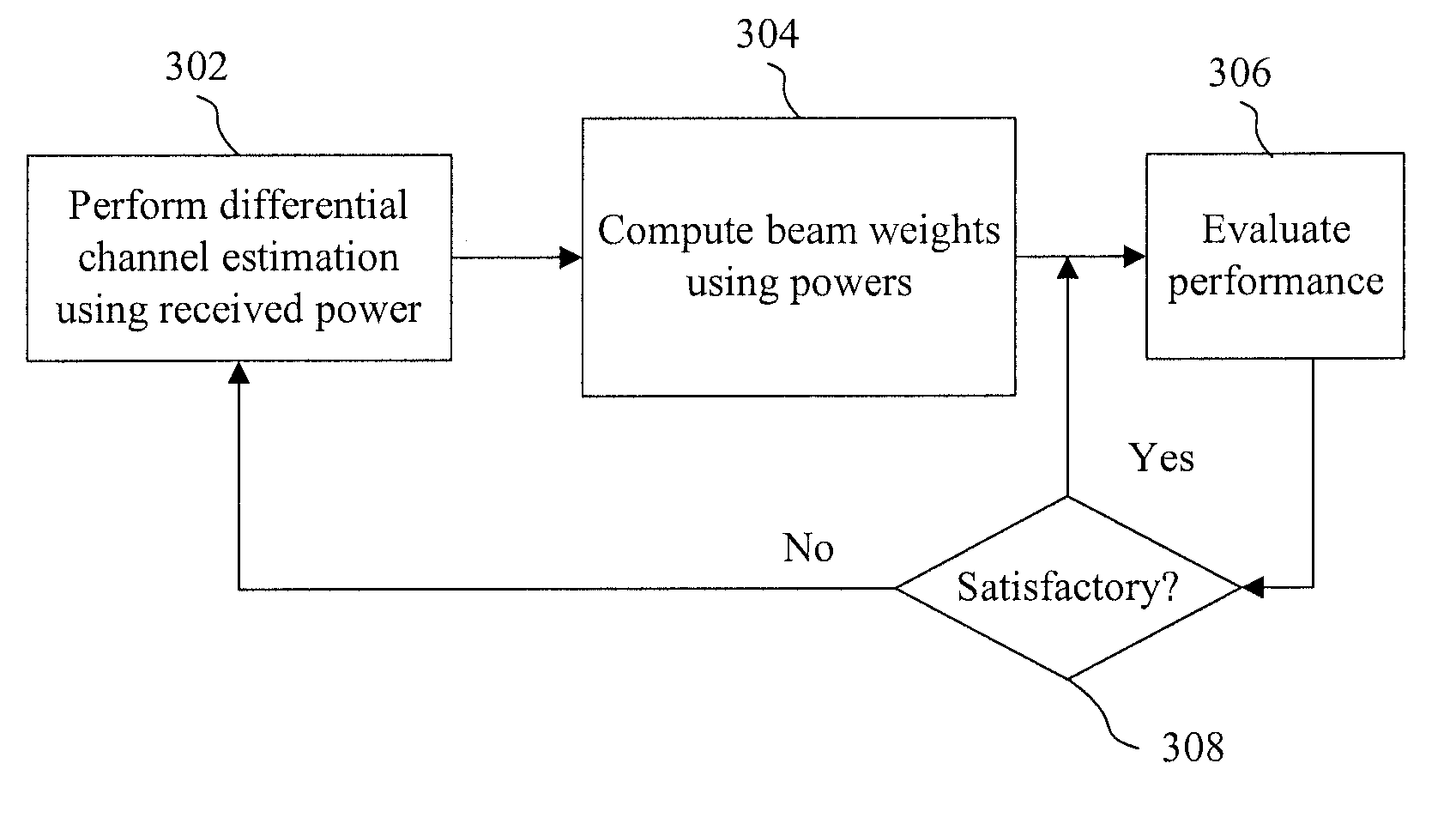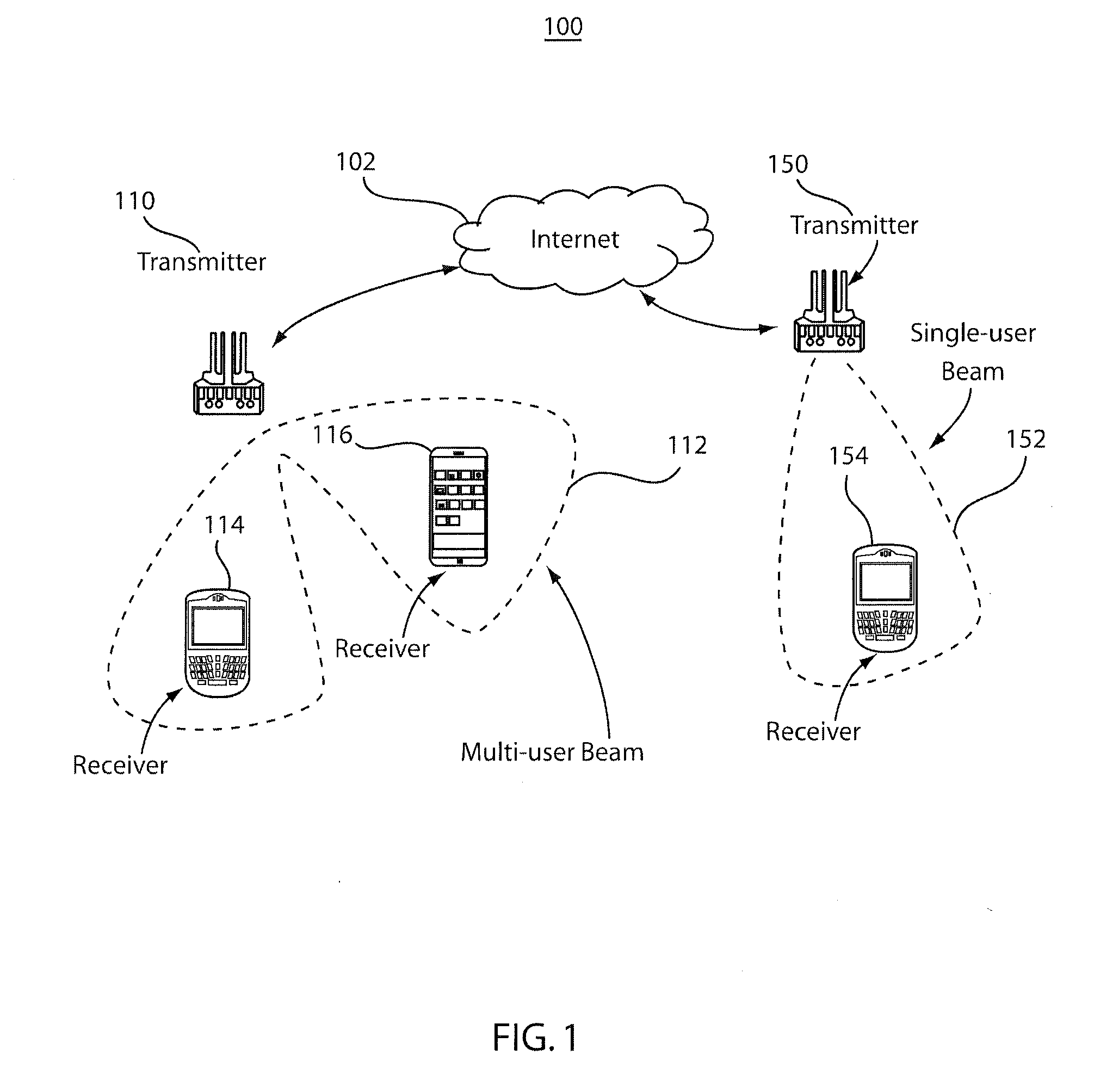Beamforming methods and systems employing measured power at a receiver to perform channel estimation
a technology of beamforming and receivers, applied in the direction of transmitter monitoring, receiver monitoring, electrical equipment, etc., can solve the problems of reducing performance, requiring receivers, and being less effective in handling multipaths in indoor environments, so as to improve the signal-to-noise ratio
- Summary
- Abstract
- Description
- Claims
- Application Information
AI Technical Summary
Benefits of technology
Problems solved by technology
Method used
Image
Examples
Embodiment Construction
[0019]As noted above, indoor wireless channels are often impaired by random fluctuations in signal level across time and space, referred to as fading. Fading is caused by multipath scattering of transmitted signals and fundamentally impacts wireless performance, leading to fluctuating data rates and even loss of connectivity. To mitigate the effect of fading, multiple transmit antenna elements together with appropriate signal processing can be used to a) increase the Signal to Noise Ratio (SNR), and b) decrease the error rate, at the receiver. This is because the probability of multiple and ideally independent channels created by the antenna elements all being in a fade at the same time reduces with an increase in the number of elements. Specifically, when multiple antenna elements are separated by a distance of the order of the wavelength (of the electromagnetic carrier signal) used, the channel gains at each of the elements is independent.
[0020]One smart antenna based technique ad...
PUM
 Login to View More
Login to View More Abstract
Description
Claims
Application Information
 Login to View More
Login to View More - R&D
- Intellectual Property
- Life Sciences
- Materials
- Tech Scout
- Unparalleled Data Quality
- Higher Quality Content
- 60% Fewer Hallucinations
Browse by: Latest US Patents, China's latest patents, Technical Efficacy Thesaurus, Application Domain, Technology Topic, Popular Technical Reports.
© 2025 PatSnap. All rights reserved.Legal|Privacy policy|Modern Slavery Act Transparency Statement|Sitemap|About US| Contact US: help@patsnap.com



